Type 2 Diabetes
Diabetes or Diabetes mellitus is a chronic life-threatening disease in which the pancreas does not produce enough insulin or when it does produce insulin but the body can’t utilise it properly. Insulin is a hormone that is produced by the cells inside the pancreas. Insulin helps transfer glucose to the cells so it can be used for energy.

According to the World Health Organisation (WHO), 8.7 percent of Indians aged between 20 and 70 are diabetic. This is due to various factors such as living a sedentary life, eating unhealthy foods, a bad lifestyle, poor work-life balance, etc.
Type 2 diabetes is the more common form of diabetes in India, affecting 2.4% population in rural areas and 11.6% population in urban areas.
In type 2 diabetes, the pancreas produces insufficient amounts of insulin for the body or the body does not use insulin properly. Type 2 diabetes is a disease that is caused due to high blood sugar levels in the body.
Type 2 diabetes can cause many complications such as blurred vision, heart problems, liver problems, frequent infections, etc.
Type 2 diabetes cannot be cured, it can only be controlled through diet, exercise, and lifestyle changes.
Type 2 diabetic patients do not require to take insulin injections regularly like type 1 diabetes patients do. They can manage their diabetes symptoms without it most of the time. However, uncontrolled type 2 diabetes can lead to severe complications if not managed in the early stages.
Obese people are at a much higher risk of being diagnosed with diabetes. Many people in India don’t even know that they might be diabetic due to a lack of awareness. Therefore, early detection and awareness of diabetes are crucial to reducing the likelihood of further complications.
Symptoms of Type 2 Diabetes
1. Urge to drink water frequently

Diabetic patients are thirsty more often than usual. This condition is known as Polydipsia. In polydipsia, a person might keep on drinking water all day long but his thirst will not go away. Thirstiness among diabetes patients is caused because high blood sugar levels force the kidneys to work much harder to get rid of excess sugar.
2. Feeling hungry often

It is one of the three major symptoms of Type 2 diabetes. This condition is known as Polyphagia. Polyphagia is caused because of high blood sugar levels in the body. In Type 2 diabetes, your body can’t convert glucose into energy for the cells. Due to this lack of energy, your hunger increases.
3. Peeing more than usual

Type 2 diabetes causes patients to pee often. This condition is known as Polyuria. Polyuria happens due to the same reason as to how polydipsia happens- because the kidneys work much harder to get rid of excess sugar from the body. Since a diabetic patient will drink water more often, he will pee more often as well.
4. Blurred vision

Type 2 diabetes can cause blurred vision among patients. This happens because when blood sugar levels rise rapidly, it causes swelling in the eye lens. However, with proper management of blood sugar levels, blurry vision can be reversed in a few weeks.
5. Fatigue

Another symptom of Type 2 diabetes is fatigue. High blood sugar levels can cause fatigue in diabetic patients even if they do everything to keep it in control. Fatigue is common in type 2 diabetic patients because glucose does not get converted into energy, this makes diabetic patients energy deficient.
6. Tingling or numbness in the limbs

High blood sugar can lead to neuropathy, which is damage or dysfunction of nerves that send signals to your arms and legs. Diabetic neuropathy causes tingling or numbness in the limbs. Diabetic neuropathy also causes problems in various vital organs in the body because of nerve damage. Neuropathy might also lead to total loss of sensation in a body part.
7. Unhealed wounds

High blood sugar levels deteriorate the circulation of blood in the body. Because of this, blood moves slowly in the body of a diabetic patient and the essential nutrients and minerals needed for faster healing can’t reach the wound properly. As a result, type 2 diabetes may lead to slow healing of wounds and sometimes the wounds never get healed.
8. Frequent Infections

High blood sugar levels deteriorate the immune system of a diabetic patient. Diabetic patients suffer from poor blood circulation and nerve damage. All of this increases the risk of getting infected by various viruses and flu.
9. Unexplained weight loss
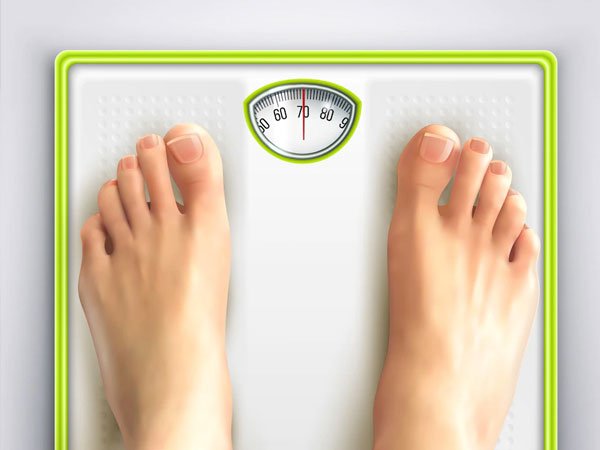
Diabetes can lead to unexplained weight loss. This happens because the body does not utilise the sugar that enters it which leads to burning fats and muscles for energy. This often causes weight loss in diabetic patients.
10. Cranky mood

High blood sugar levels can cause highs and lows in the mood of a diabetic patient. Mood swings are quite common in diabetes patients. They are caused due to fluctuations in blood sugar levels in the body. Constant fluctuations in blood sugar levels can cause irritability, aggression and depression in diabetic patients.
11. Dry Skin

Type 2 diabetes can also cause your skin to become dry. Since diabetic patients are more prone to infections and diseases, it is no surprise that they are also at a much higher risk of skin infections and dry skin. Diabetes also causes poor blood circulation which makes the cells nutrient-deficient due to poor delivery of glucose. This often leads to dry skin.
Causes of Type 2 Diabetes
1. Genes

People who have a family history of diabetes are at a much higher risk of being diagnosed with diabetes. Though hereditary diabetes is more common for type 1 diabetes, it can also happen in type 2 diabetes. Type 2 diabetes is also more common in certain ethnicities such as Asians and African Americans.
2. Inactivity

People who don’t exercise often and live a sedentary, inactive lifestyle are at a higher risk of Type 2 diabetes. Physical inactivity can cause sugar to build up inside the body, leading to high blood sugar levels. To reduce the risk of type 2 diabetes, you should aim to exercise moderately 4 to 6 times a week.
3. Age

People who are above the age of 45 are at a much higher risk of type 2 diabetes. Type 1 diabetes is usually diagnosed in children and adolescents, while type 2 diabetes is usually diagnosed in middle-aged people. Type 2 diabetes in middle-aged or old-aged people can raise the risk of various diseases such as Heart attack, liver disease, kidney problems, stroke etc. People above the age of 45 should try to prevent type 2 diabetes by changing their diet, living a stress-free life and exercising regularly.
4. Prediabetes
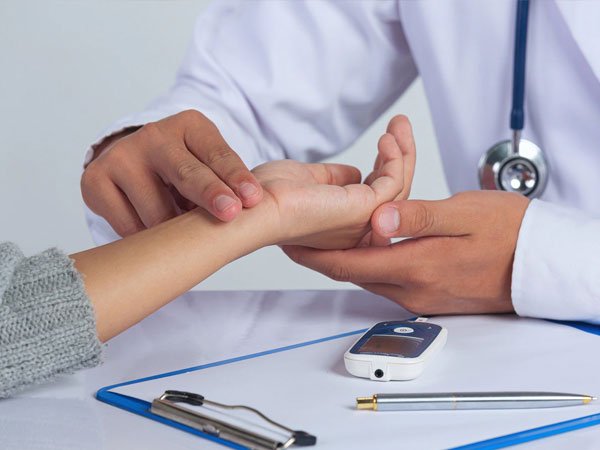
Prediabetes is a condition in which the blood sugar levels are at an alarming level but not yet enough to be diagnosed as type 2 diabetes. Most prediabetic patients don’t even know they have it. People with prediabetes are much more likely to be diagnosed with type 2 diabetes than people who don’t have it. Prediabetes can be considered an early-stage type 2 diabetes.
5. High blood pressure
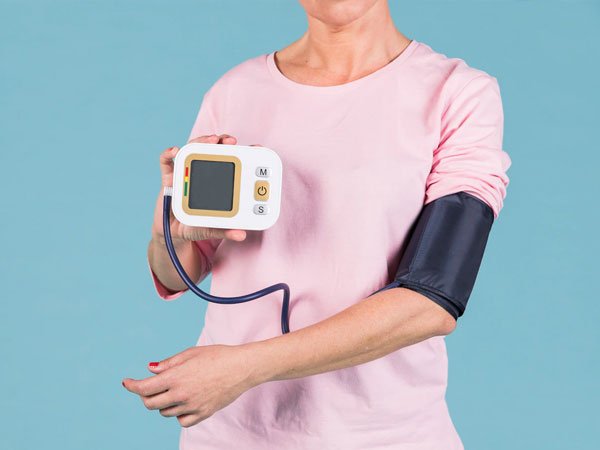
High blood pressure can cause type 2 diabetes. It is also a complication of type 2 diabetes and is caused by poor circulation in the body. High blood pressure can cause many problems such as heart disease, stroke, and clogged arteries. To reduce the risk of type 2 diabetes, blood pressure should be kept in control.
6. Obesity and overweight

Being obese or overweight can cause type 2 diabetes in people. Being obese can increase inflammation in the body and lead to insulin resistance. Being obese makes glucose delivery to the cells more difficult and causes problems in blood circulation. Obese people should try to lose weight as it can reduce their chances of being diagnosed with type 2 diabetes.
7. Comorbidities

Comorbidities refer to the existence of more than one illness inside your body at the same time. Diabetes can act as comorbidity along with other health problems such as high blood pressure, Kidney disease, cardiovascular disease, etc. If you are suffering from an illness such as heart disease, then you should get a diabetes test done.
8. Incoordination among cells

One of the biggest causes of type 2 diabetes is incoordination among the cells of the body. When the blood sugar levels in the body are spiked, it makes it hard for sugar to enter the cells of the body, leaving the cells energy-deficient. Proper diet and exercise can improve cell health and reduce the chances of incoordination among cells.
9. Damaged beta cells

Beta cells are the cells inside the pancreas that produce insulin. As we know, Insulin manages the blood sugar levels in the body. Damage to beta cells can hinder the production of insulin, which can cause type 2 diabetes in people. Damage to beta cells happens because high blood sugar levels cause beta cells to over-work.
Diagnosing Type 2 Diabetes
1. A1C testing
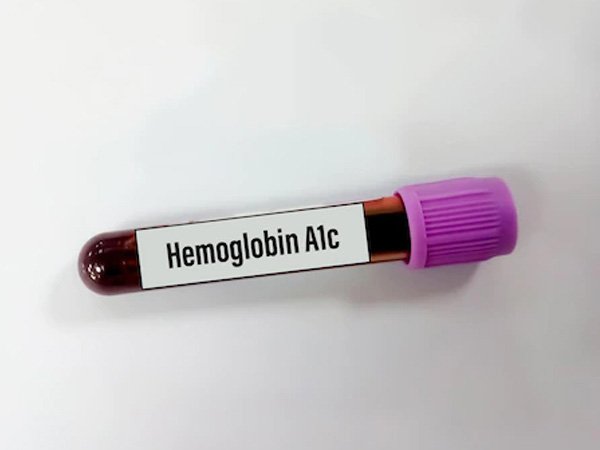
A1C testing is done to determine the percentage of red blood cells that have sugar-coated hemoglobin. A1C refers to the glucose-hemoglobin part of a red blood cell. An A1C level of more than 6.5% means that you have diabetes. A1C can measure average blood glucose levels of over 2 to 3 months.
2. Fasting plasma glucose Test
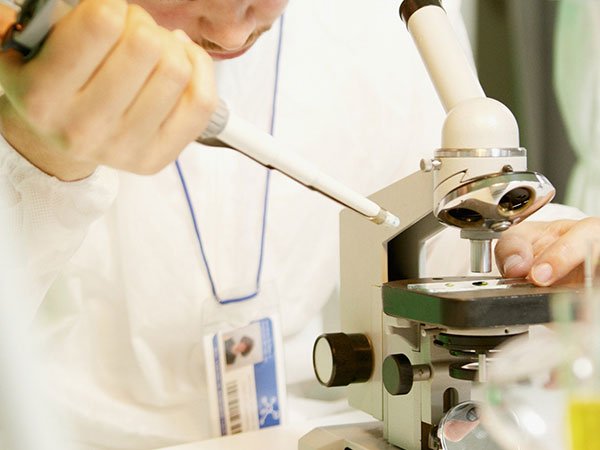
It is also known as the fasting blood glucose test. Fasting plasma glucose test measures the blood sugar levels in the body. It is a simple and inexpensive test that can provide accurate results about the blood sugar levels in the body and if a person has diabetes or not. The fasting plasma glucose test is recommended every 3 months for people older than 35 years. If a fasting glucose test shows a reading of 126 or higher, then the person is diabetic.
3. Random Plasma glucose test

A random glucose test is a method of testing blood glucose levels in the body. Random plasma tests are conducted in order to determine whether a person has diabetes or not. Random plasma glucose tests can be conducted at any time and do not require any kind of fasting or continuous monitoring. A random plasma glucose test of 200 and higher means a person has diabetes.
4. Oral glucose tolerance test

Oral glucose tolerance test determines the glucose tolerance level of a person. During an Oral glucose tolerance test, glucose is administered to a patient and then a blood test is conducted to determine how the glucose reacted in the blood. It checks the blood sugar levels both before and after administering glucose. If an Oral glucose tolerance test shows a reading of 200 and higher, then the patient has diabetes.
Complications of Type 2 Diabetes
1. Angina

Angina is a kind of chest pain that happens due to a lack of blood going to the heart. Angina can be very similar to a heart attack but it is caused by different things. It is a complication of diabetes. Even though Angina goes away after a few seconds or minutes, it can be life-threatening just like a heart attack. To prevent the risk of Angina, Diabetic patients should take care of their diet and exercise regularly.
2. Atherosclerosis

Atherosclerosis refers to the clogging of arteries due to the buildup of fats and other substances. In Atherosclerosis, the arteries become hardened and blood flow is obstructed due to the buildup. Atherosclerosis is a serious condition that can lead to heart attack, stroke, cardiovascular disease, etc. It is common in people who are older than the age of 45 and have diabetes.
3. Kidney failure
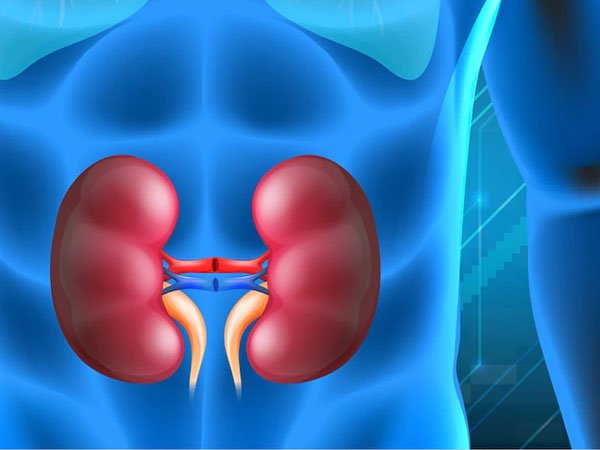
Kidney failure refers to the dysfunction of the kidneys in which their ability to filter waste from the blood deteriorates. Kidney failure can be caused by diabetes because it makes the kidney work much harder in order to excrete the excess sugar from the body. Sometimes kidney failure results in total loss of one or both kidneys, which can be life-threatening for a person.
4. Birth Defects in Neonates

Babies that were born to mothers who had gestational diabetes have higher chances of being diagnosed with type 2 diabetes later in life. These children have to take care of their health from the beginning and the parents have to take all the precautions they can in order to reduce the chances of type 2 diabetes in the children.
5. Sleep Apnea

Sleep apnea is a condition in which the breathing keeps fluctuating and constantly starts and stops during sleep. It can be life-threatening if left untreated for long. It can cause multiple problems ranging from loud snoring and fatigue to heart attacks. Sleep apnea can be a complication of Diabetes and can make diabetes symptoms much worse than usual.
6. Hearing Loss

It can refer to the loss of hearing in one or both ears by a significant percentage or even total loss of hearing. Hearing loss is a complication of diabetes. Diabetes causes nerve damage because of high blood pressure and high blood sugar levels. Hearing of a diabetic person keeps on getting worse due to constant damage to the nerves and blood vessels.
7. Alzheimer’s

Diabetes can sometimes also cause Alzheimer’s in patients. According to research, People who have type 2 diabetes or prediabetes are at higher risk of being diagnosed with Alzheimer’s and dementia later in life. Alzheimer’s is a serious disease in which a person experiences gradual memory loss leading to loss of proper brain function to respond to others and remember things.
8. Depression

Another complication of diabetes is Depression. Fluctuations in blood sugar levels lead to mood swings and depression in diabetic patients. Being diagnosed with diabetes can also lead to patients feeling depressed. Diabetic patients must maintain stable blood sugar levels and reduce stress in order to reduce the symptoms of depression.
Prevention and Treatment of Type 2 Diabetes
1. Adopt a healthy and active lifestyle
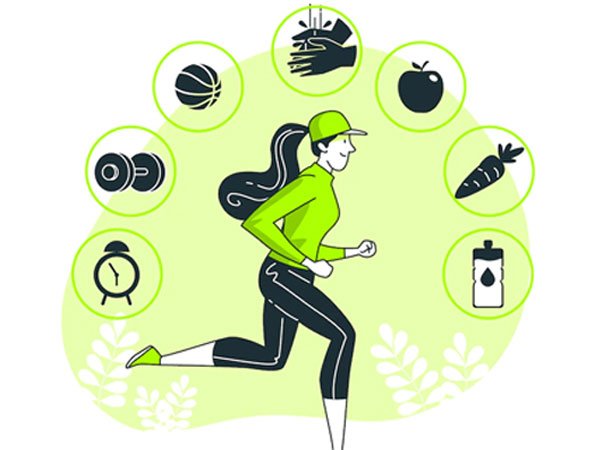
To prevent type 2 diabetes, it is important for people to adopt a healthy and active lifestyle. They would have to make changes in their daily routine such as eating healthy foods, exercising regularly, getting a good amount of sleep every day and maintaining a good work-life balance. Having a disciplined routine every day can improve the quality of life and reduce the chances of developing type 2 diabetes in the future.
2. Be aware of the consequences of the disease

You can prevent the onset of Type 2 diabetes if you are aware of how it can develop over time and the consequences that are associated with it. Even if you have already been diagnosed with type 2 diabetes, being aware of the disease can help you manage it and reduce the chances of further complications.
3. Monitor blood glucose levels

Diabetic patients who take insulin regularly should measure their blood glucose levels 4 to 6 times a day. In order to reduce the chances of further complications, regular check-ups are essential. You can monitor blood glucose levels by using a Continuous Glucose Monitor, which checks the blood sugar levels continuously throughout the day. You can also use a glucometer, which is a small device that tells about the blood glucose levels by scanning a small blood sample.
4. Improve Diet

Diet forms a major part of diabetes management. If you follow a healthy diet that consists of fruits, vegetables, and whole foods and contains low amounts of sugar then the chances of being diagnosed with diabetes reduce drastically. Following a healthy diet can provide you with the essential nutrients and minerals that can help in reducing the risk of diabetes. Even if you have diabetes, following a healthy diet can reduce the chances of further complications.
5. Routinely get health checkups done

When you have diabetes or are worried about being diagnosed with diabetes it is crucial that you get health check-ups regularly. Routinely getting health check-ups can inform you about the potential risks of diabetes that are possible. It can help you take the necessary precautions in order to reduce further complications from diabetes.
6. Avoid junk food

Junk foods are filled with calories and sugar that raise the risk of type 2 diabetes. They are also nutrient deficient which can be very harmful to diabetic patients. Diabetic patients should limit their consumption of junk foods in order to manage their symptoms. Eating too much junk food can cause rapid increases in blood sugar levels, which can make diabetes much worse.
7. Manage Stress

Stress is a major contributor to type 2 diabetes and can also cause it to become even worse. Stress can cause you to neglect your health and make it difficult to create and follow a daily routine. Stress can also cause depression in diabetic patients which can make their condition even worse. Managing stress can help you keep type 2 diabetes under control. If not kept in control, stress can cause many issues such as heart disease and stroke in diabetic patients.
8. Be Physically Active

Being physically active and exercising 4 to 6 times a week can reduce the chances of type 2 diabetes. Exercising often can improve blood circulation and digestion. Both of which are essential for insulin delivery. Even diabetic patients can reduce their chances of further complications if they exercise regularly. Exercising can help you digest sugar faster. Exercising also allows you to maintain a healthy weight.
9. Maintain a Healthy Weight

Being obese or overweight can raise the risk of type 2 diabetes. Obesity increases the build-up of fats inside the body and leads to poor circulation of blood. It also hampers insulin delivery to the cells of the body. All this can lead to type 2 diabetes. Being obese can also cause further complications for diabetic patients. Hence, It is essential that you maintain a healthy weight in order to reduce the chances of being diagnosed with type 2 diabetes.
10. Antidiabetic Medications

If none of the conventional methods works in treating type 2 diabetes, then diabetic patients can consume anti-diabetic medications. Anti-diabetic medications help in the management of type 2 diabetes. Most diabetes medications are meant for type 1 diabetes but some are also available for type 2 diabetes. Some of the anti-diabetes medicines are- acarbose, metformin, pramlintide, and albiglutide.